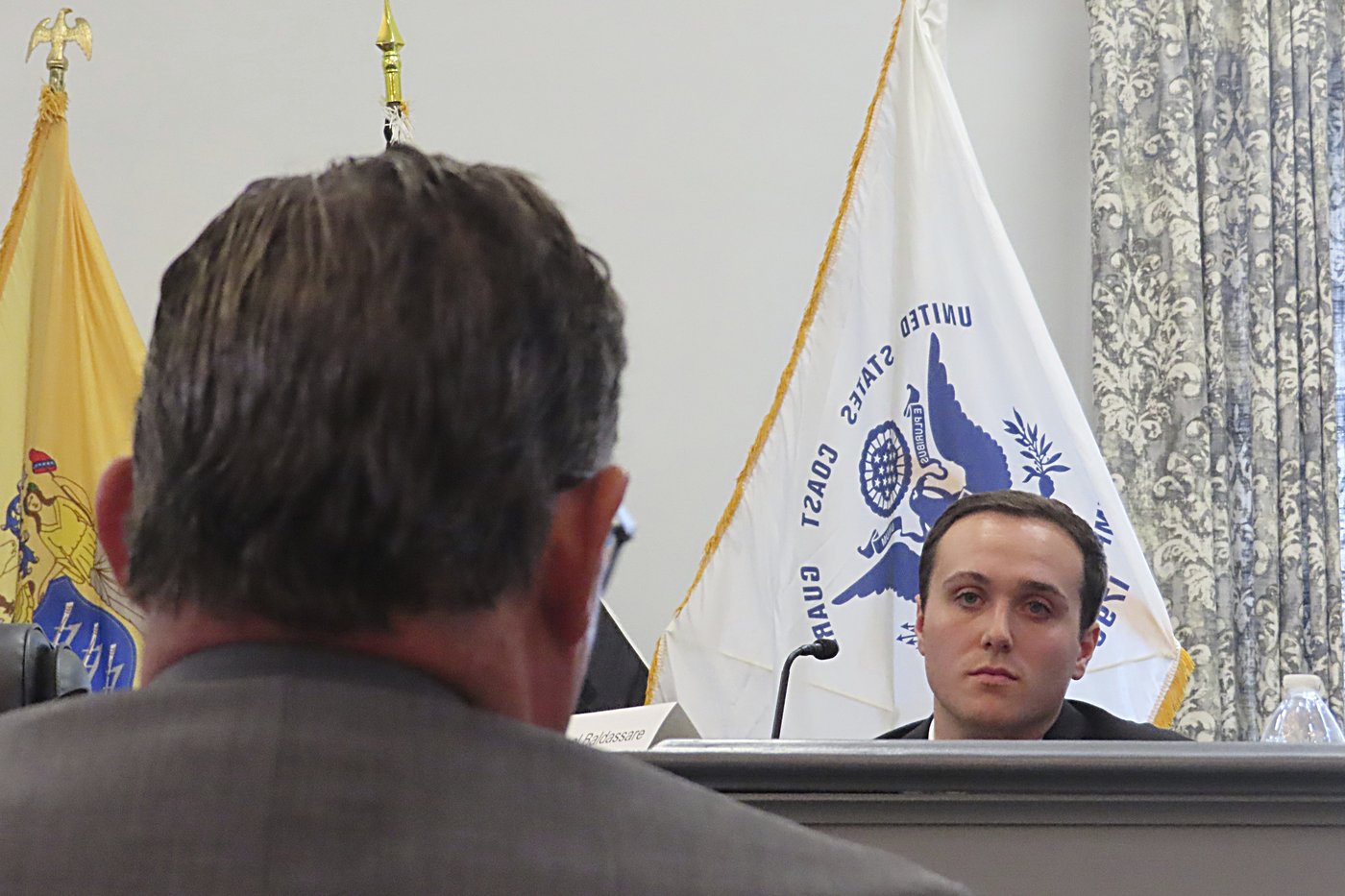
Ship mate says he saw vehicle smoking hours before it caught fire, killing 2 New Jersey firefighters
February 7, 2024
By
The Associated Press

Gaven Puchinsky is questioned at a hearing Wednesday, Jan. 10, 2024, in Union, N.J. into a fatal cargo ship fire in Newark N.J. last July that killed two firefighters. Puchinsky testified a Jeep he was using to push vehicles onto the ship burst into flames aboard the vessel. (AP Photo/Wayne Parry)
By Wayne Parry in Union
UNION, N.J. (AP) — New testimony in the case of a fatal cargo ship fire in New Jersey sheds some light on whether it could have been prevented.
A crew member says he saw smoke coming from a seaport vehicle being used to push inoperative cars onto a cargo ship at least nine hours before it caught fire on board the vessel, touching off a blaze that killed two Newark firefighters.
In online testimony at a joint Coast Guard-National Transportation Safety Board hearing Friday, Marian Ciumala, third mate of the Italian-owned Grande Costa D’Avorio, said he saw a Jeep Wrangler being used to push cars onto the cargo ship begin to emit smoke on July 5, 2023, while docked in Port Newark.
His testimony represented potential support to the contention by the families of the dead firefighters that the blaze could have been prevented had the vehicle’s use been discontinued.
Previous testimony in the case has documented that the Jeep caught fire on an upper deck of the 12-level ship, starting a blaze that quickly spread and filled numerous levels of the vessel with dark, choking smoke.
The fire at one of the nation’s busiest seaports killed Newark fire Captains Augusto “Augie” Acabou and Wayne “Bear” Brooks Jr.
Ciumala’s first duty shift that day was from 8 a.m. to noon. At some point during that shift, he testified, he saw the Jeep pushing a vehicle onto the ship before it stopped on Deck 3.
“I saw some white smoke going out from the front of the car,” he testified.
The driver of the Jeep got out and spoke with another worker who was directing him, and they were soon joined by a third man. They appeared to be discussing the smoke coming out from the driver’s side of the hood, Ciumala said.
Ciumala said he had to perform a task and left the immediate area. Later — he did not recall how much — he said he saw the Jeep being used to push vehicles again.
“After some time, I saw the car working again without any problems,” he testified.
An official with the transportation board asked Ciumala if the Jeep might have been emitting steam, as if the engine was overheating, as opposed to smoke.
“I saw white smoke,” he replied. “I never approached the car to see if it was steam. I interpreted it as white smoke.”
Geno Zonghetti, a lawyer for one of the stevedore companies loading the ship that day, grilled Ciumala about his recollection of the incident.
“Even though you said you saw smoke, you never reported this to anyone on the vessel, correct?” he asked.
“Yes,” Ciumala replied.
“And this, whatever you saw, did not concern you, right?”
“Negative,” Ciumala replied. “At that time, I saw the car was isolated. At the time I assumed this is nothing. And after that I saw that car is still working, so I assumed there is no danger.”
Ciumala also testified that the Jeep was struggling to push heavier vehicles up a steep ramp inside the ship, although he did not recall if this happened before or after the smoke he reported seeing.
“On the ramp, they were forcing the engine,” he said. “You could hear the engine to the max. The rpms, the engine was using the maximum force.”
A port worker previously testified he was the one driving the Jeep when it caught fire, describing how sudden flames caused him to jump out and run for nearby fire extinguishers, two of which he emptied onto the flaming vehicle to little effect before fleeing with some other workers.
When the fire broke out around 9 p.m., Ciumala said he and another ship’s officer tried to extinguish it using a shipboard hose connected to an onboard hydrant. The officer turned the valve to start water flowing, and Ciumala attached a nozzle to the other end of the hose.
But nothing happened.
“I was waiting for the water to come,” he testified. “No water came out when I was there. We didn’t have any water in the line because when you open the pipe it takes some time to reach” you.
At this point, choking black smoke enveloped both men, forcing them to abandon the hose and retreat.
“I breathed very heavily after that,” Ciumala said. “You could see nothing.”
The agencies plan to issue a report on the fire, but its timing remains unclear.